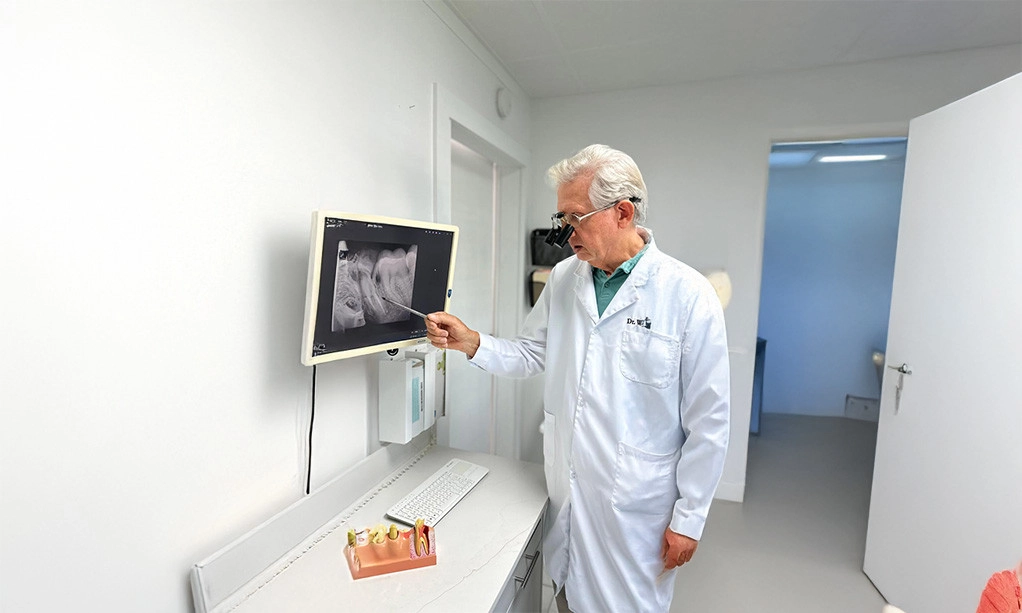
Root Canal Therapy
There is frequently a mixture of hesitation and anxiety when someone brings up the subject of a root canal. It has a reputation, so that makes sense. In actuality, however, it's a simple process with a one goal: preserving your original tooth. Root canal therapy can eliminate pain, prevent infection, and restore normal function without causing the suffering that many people anticipate when done carefully and precisely.
Why a Tooth Might Need Root Canal Treatment
A soft tissue core known as the pulp is found inside each tooth. Nerves and blood arteries are found in this live portion of the tooth, which is necessary for early growth but not necessary for the survival of a fully grown tooth. Prolonged discomfort, sensitivity to heat or cold, or even swelling close to the gums might result from inflamed or infected pulp, which can be caused by severe decay, fissures, trauma, or several dental treatments. Untreated infection has the potential to develop outside of the tooth and cause more severe issues.
Through root canal therapy, the tooth's inside is cleaned, the inflammatory or diseased tissue is removed, and the tooth is sealed to stop future problems.
What to Expect During the Procedure
A root canal isn’t as complex or painful as people often imagine. In fact, most treatments are done in one or two appointments and feel similar to getting a filling.
The procedure starts with a thorough examination, typically aided by X-rays, to determine the number of canals involved and evaluate the tooth's health. A little hole is cut in the tooth's crown after the region has been numbed. The interior of the root canals is cleaned, shaped, and disinfected through this opening, which also removes the diseased pulp. When the area is prepared, a rubbery substance is poured into it and sealed.
Does It Hurt?
You might be surprised to learn the answer to one of the most often asked questions. The operation is usually no more unpleasant than a conventional dental filling thanks to modern methods and anaesthesia. When the anaesthetic is administered, you may experience pressure or a momentary squeeze, but there shouldn't be any discomfort during the actual procedure. It's common to experience some stiffness following, although it's generally light and transient.
Is It Safe?
Yes. For many years, root canal treatment has been researched and is still a safe and effective way to keep a natural tooth intact. Dental societies across the world and scientific study have totally disproved concerns that were originally expressed regarding potential health dangers. When accompanied by appropriate oral hygiene and routine dental checkups, treated teeth can last for many years, if not forever.
Are There Alternatives?
If root canal treatment is neither feasible or desired, tooth extraction is an alternative. However, tooth extraction presents a unique set of difficulties. It may impact chewing, move neighbouring teeth, and cause jaw bone loss. Function may be restored by replacing the tooth with a bridge or implant, but these procedures are more time-consuming and may be more expensive overall.
The easier and healthier option is to save the natural tooth as much as possible, and a root canal is made to achieve just that.
What Comes After
Most patients return to their usual routine right after treatment. The tooth may feel slightly sensitive for a few days, but discomfort tends to fade quickly. Once a final crown or filling is placed, the tooth looks and functions like any other. With good brushing, flossing, and periodic checkups, it should stay that way for years.
After a few months, a follow-up X-ray could be suggested to make sure the healing process is proceeding as planned. There is no need for extra care beyond routine maintenance if everything appears to be in good condition, which it typically is.
When to Consider It
If you're dealing with deep tooth pain, sensitivity that lingers, or swelling near a tooth, it’s worth having it checked sooner rather than later. A timely root canal could make all the difference between keeping your natural tooth and losing it.

